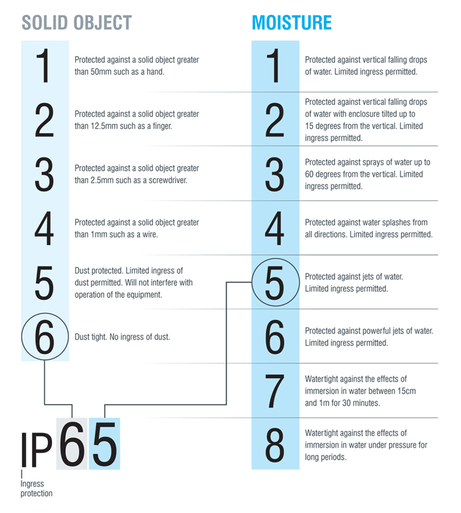We’ve all have heard different IP rating notations used by the manufacturers, but did we really know the meaning of the numbers described there ?. And how can we differentiate the meaning between two IP ratings by their numbers? Let’s dive in and know more about these and learn what is the real meaning of those IP rating.
IP rating stands for Ingress Protection rating of a product is represented by two numbers, defined in international standard EN 60529. It is used to define levels of sealing effectiveness of electrical enclosures against intrusion from foreign bodies i.e. tools, dirt etc and moisture. The first digit is the protection rating against solid foreign objects and the second digit represents the protection against the ingress of water.
IP Rating First Digit (intrusion protection)
- No special protection
- Protection from a large part of the body such as a hand or from solid objects greater than 50mm in diameter.
- Protection against fingers or another object not greater than 80mm in length and 12mm in diameter.
- Protection from entry by tools, wires etc, with a diameter of 2.5 mm or more.
- Protection against solid bodies larger than 1mm (eg fine tools/small etc).
- Protected against dust that may harm equipment.
- Totally dust tight.
IP Rating Second Digit (moisture protection)
- No protection.
- Protection against condensation.
- Protection against water droplets deflected up to 15° from vertical.
- Protected against spray up to 60° from vertical.
- Protected against water spray from all directions.
- Protection against low-pressure water jets (all directions)
- Protection against strong water jets and waves.
- Protected against temporary immersion.
- Protected against prolonged effects of immersion under pressure.
So, for example, an IP Rating for IP 67 means, the device is 6= Protected against dust that may harm the device and 7= Protection against strong water jets and waves. Similarly, we can figure out for other ratings like IP65, IP 54 etc.
